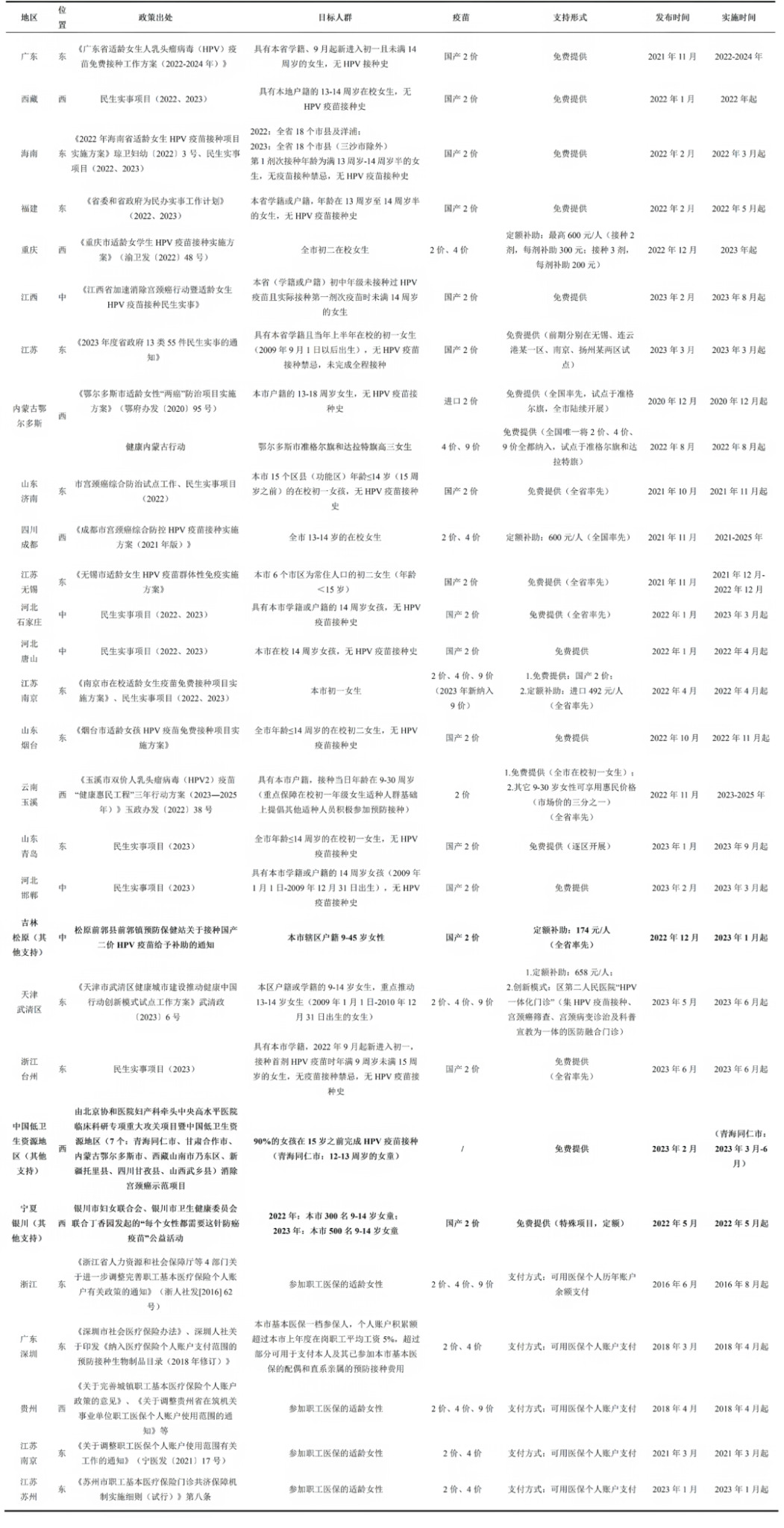Evidence proved that cervical cancer is a preventable and controllable disease. In 2020, the World Health Assembly approved the “Global Strategy to Accelerate the Elimination of Cervical Cancer as a Public Health Problem.” This declaration signifies a collaborative effort among 194 countries globally to achieve the 90-70-90 targets by 2030. These targets include: ensuring that 90% of girls fully vaccinated with HPV vaccine by age 15 years, 70% of women are screened with a high-performance test by 35 years of age and again by 45 years of age, and 90% of women identified with cervical disease receive treatment (90% of women with precancer treated, and 90% of women with invasive cancer managed) [1]. The strategy recommends a comprehensive approach for the prevention and control of cervical cancer.
Figure 1: Life-course approach to cervical cancer interventions

The recommended actions encompass a comprehensive set of interventions throughout the entire life course, covering primary prevention (HPV vaccination), secondary prevention (conducting HPV screening, providing immediate treatment for women diagnosed with precancerous lesions), and tertiary prevention (treatment of invasive cancer at any age through surgery, radiotherapy, chemotherapy, and palliative care). Figure 1 illustrates the strategies and actions for the primary, secondary, and tertiary prevention recommended by the World Health Organization (WHO). These actions require interdisciplinary and inter-sectoral collaboration to implement community education, community mobilization, immunization, screening, and treatment.
Previous studies suggest that achieving the 90-70-90 targets by 2030 in 78 low-income and lower-middle-income countries would result in a median reduction of 2%, 42%, and 97% in cervical cancer incidence by 2030, 2045, and 2120, respectively. The cumulative number of cervical cancer deaths averted would be about 2 million, 5 million, and over 62 million by 2040, 2050, and 2120, respectively (Figure 2)[1,2].
Figure 2. Projections of the effectiveness in reducing cervical cancer incidence rate, cases, and mortality in 78 low- and middle-income countries after implementation of the elimination strategy.



A modeling study revealed the effectiveness of implementing an optimal intervention recommended by the World Health Organization for cervical cancer elimination in China. The results showed that age-standardized incidence rate would be less than 4 per 100,000 by the year 2047. Moreover, between 2021 and 2100, it is anticipated to reduce 7,509,000 new cervical cancer cases and nearly 2,529,000 deaths attributed to cervical cancer (Figure 3). The Incremental Cost-Effectiveness Ratio (ICER) associated with the optimal interventions was estimated at approximately $4,344 per disability-adjusted life year gained [2].
Figure 3: Age-standardized cervical cancer incidence and mortality for the optimal pathway.

(Image Source: Xia, C., et al (2021). Effectiveness and cost-effectiveness of eliminating cervical cancer through a tailored optimal pathway: a modeling study. BMC Medicine, 19(1), 62. doi:10.1186/s12916-021-01930-9)
Content Reviewer: Kelly Hunter, Zhangyang Pan
References:
- Global strategy to accelerate the elimination of cervical cancer as a public health problem. Geneva: World Health Organization; 2020. Licence: CC BY-NC-SA 3.0 IGO.
- Brisson M, Kim JJ, Canfell K, Drolet M, Gingras G, Burger EA, Martin D, Simms KT, Bénard É, Boily M-C: Impact of HPV vaccination and cervical screening on cervical cancer elimination: a comparative modelling analysis in 78 low-income and lower-middle-income countries. The Lancet 2020, 395(10224):575-590.
- Xia C, Xu X, Zhao X, Hu S, Qiao Y, Zhang Y, Hutubessy R, Basu P, Broutet N, Jit M et al: Effectiveness and cost-effectiveness of eliminating cervical cancer through a tailored optimal pathway: a modeling study. BMC Medicine 2021, 19(1):62.





